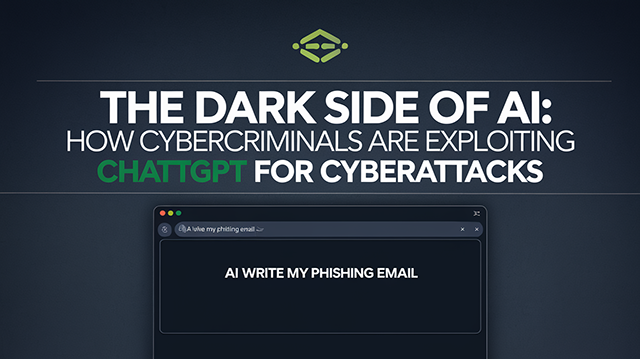The Dark Side of AI: How Cybercriminals Are Exploiting ChatGPT for Cyberattacks

OpenAI recently released an in-depth report on the misuse of its AI models, specifically ChatGPT, by cyber threat groups. This report sheds light on how cybercriminals have exploited AI tools to enhance their operations, targeting sectors from social media influence to malware development. OpenAI’s findings are a stark reminder of the dual-edged nature of AI technology, with threat actors leveraging its capabilities to refine their attacks while AI companies work to defend against them.
Key Insights from the OpenAI Report
OpenAI revealed that since the start of 2024, it had disrupted over 20 cyber operations and deceptive networks across the globe. These operations included state-sponsored actors from countries like China and Iran, with a focus on using ChatGPT for reconnaissance, debugging malware, generating disinformation, and writing content for fake personas on social media.
Despite these alarming activities, OpenAI emphasized that AI tools did not enable these threat actors to create fundamentally new malware or significantly enhance their capabilities. Their impact has been mostly incremental, providing efficiency gains in existing tactics rather than revolutionary breakthroughs.
Notable Threat Actors
The report highlights three major threat groups misusing AI:
- SweetSpecter: A China-linked adversary, SweetSpecter used ChatGPT for various tasks such as reconnaissance, vulnerability research, and anomaly detection evasion. The group also engaged in spear-phishing attempts targeting OpenAI employees. Their activities, however, were blocked by OpenAI’s security systems. This group exemplifies the use of AI to aid in vulnerability exploitation and script development, although it did not succeed in penetrating OpenAI’s defenses.
- CyberAv3ngers: This Iran-linked group, associated with the Islamic Revolutionary Guard Corps (IRGC), targeted industrial control systems (ICS) and programmable logic controllers (PLCs) used in critical infrastructure sectors. The group used ChatGPT to research vulnerabilities, debug code, and ask for scripting advice to exploit systems in countries like Israel, the U.S., and Ireland. The activities focused on weak ICS security and leveraging AI to enhance existing attack vectors.
- STORM-0817: Another Iran-based group, STORM-0817, was the first to be publicly identified for its use of AI in cyberattacks. The group used ChatGPT for debugging Android malware, creating tools like Instagram scrapers, and developing command-and-control infrastructure for malicious Android applications. These malware programs were capable of exfiltrating sensitive data such as call logs, contacts, browsing history, and media files, while also compromising the security of encrypted messaging apps like WhatsApp.
AI's Role in Cyber Operations: Incremental but Not Revolutionary
According to the report, threat actors primarily used ChatGPT to streamline existing operations rather than create new capabilities. This included enhancing malware debugging processes and generating polished disinformation content, but there was no evidence of AI enabling them to develop new, sophisticated malware strains.
OpenAI’s efforts to disrupt these operations included banning accounts linked to malicious activities and improving detection capabilities. By employing AI-driven tools, OpenAI was able to compress analytical steps from days to minutes, significantly enhancing its ability to detect and respond to potential threats.
Conclusion and Future Steps
While the misuse of AI in cyberattacks is concerning, OpenAI's report concludes that the impact of AI-enhanced cybercrime remains limited. However, the growing sophistication of AI-assisted attacks underscores the need for continued vigilance. OpenAI remains committed to working with industry partners, governments, and security researchers to mitigate these threats, sharing insights and improving detection capabilities.
As AI technology continues to evolve, both defenders and attackers will adapt. For organizations and cybersecurity professionals, staying ahead of these developments will require leveraging AI for protection, understanding new attack vectors, and fostering collaboration across industries to ensure a safer digital ecosystem.
Sources:
- Influence and Cyber Operations: An Update, October 2024 (OpenAI Report).
- "Hackers Misusing ChatGPT to Write Malware: OpenAI Report," TechWorm, 2024. Link
- OpenAI confirms threat actors use ChatGPT to write malware (Bleeping Computer).


